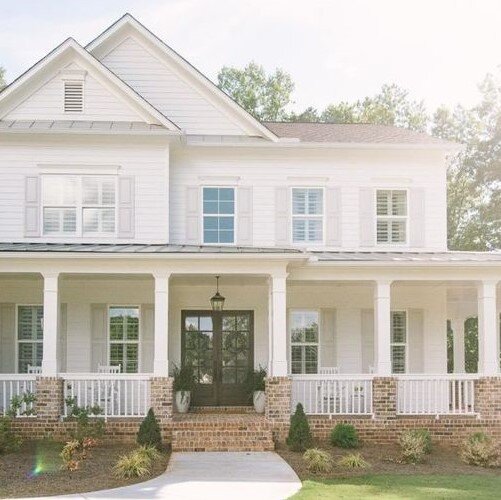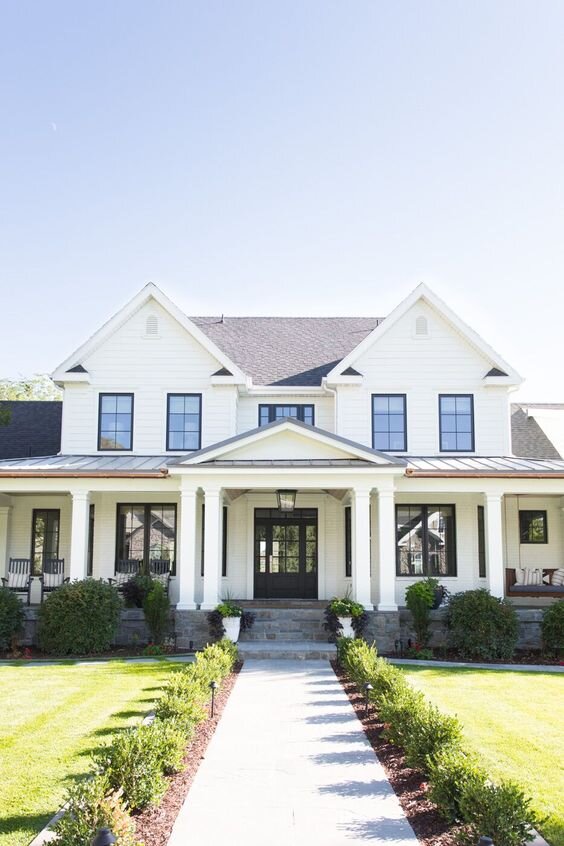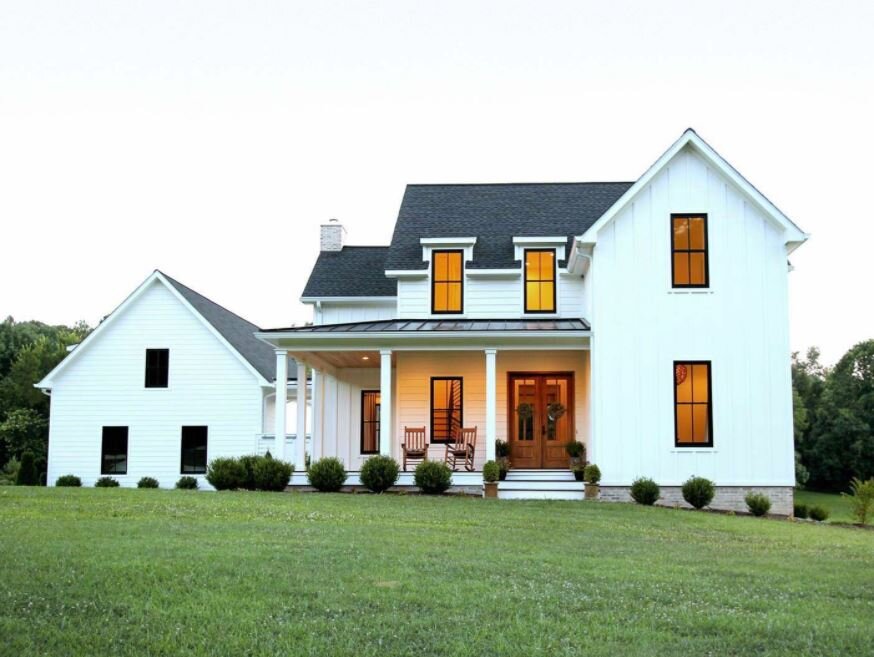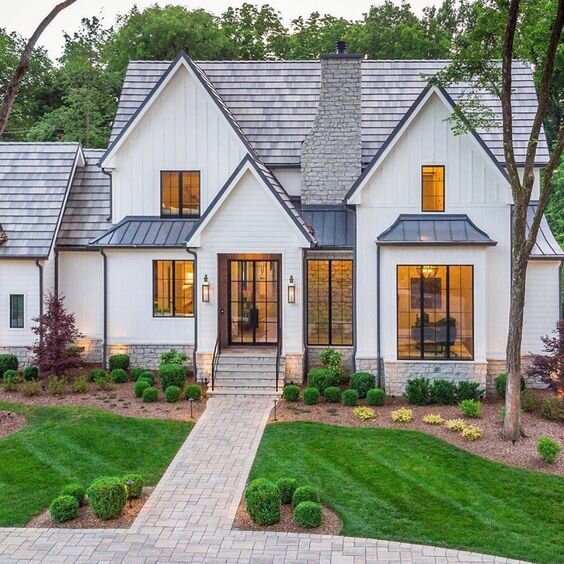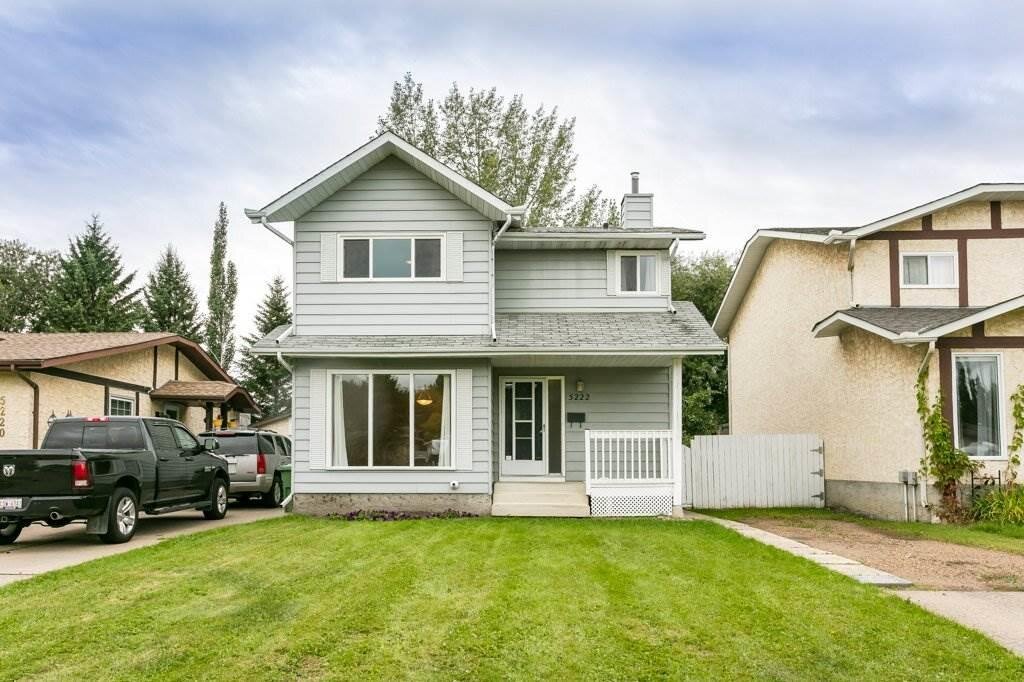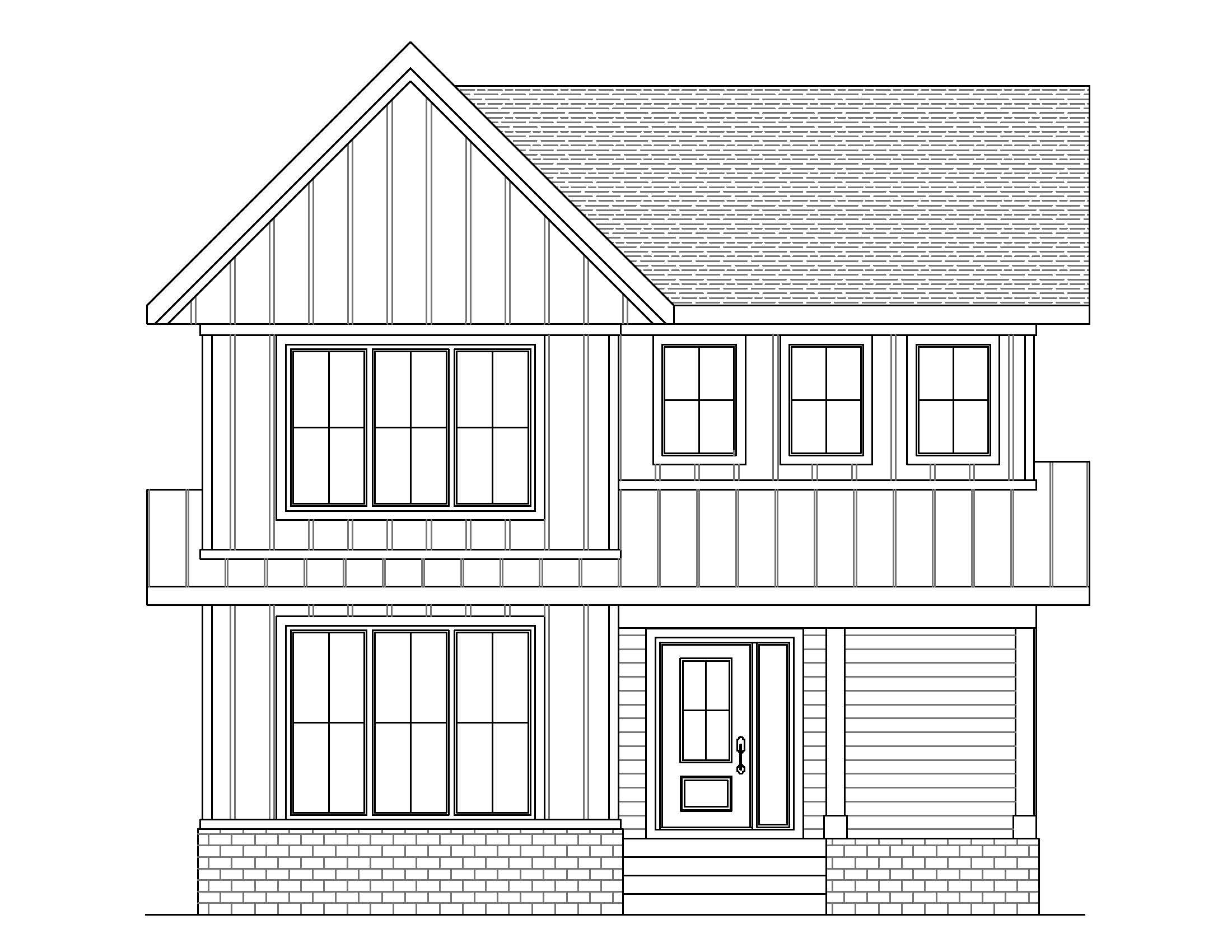Architecture 101 - Everything You Need To Know About The Modern Farmhouse
Oh the Modern Farmhouse. Whether it be the welcoming front porch, the abundance of windows, the simple, yet classic design, or just the comfy and coziness of it all, the Modern Farmhouse style is easily one of the most trending home styles right now and continues to gain popularity thanks to shows like HGTV’s Fixer Upper.
But have you ever wondered what really makes a home a Modern Farmhouse? What are the common characteristics of the Modern Farmhouse? What colours and materials should be used? And how could a boring, outdated house be updated to not only embrace the style, but project that irresistible “comfy, cozy, yet rustic chic” vibe that’s dominating our Instagram feeds?
History of the Farmhouse
The history of the Farmhouse actually dates back to 16th and 17th century Scandinavia and Germany, where the home was built out of necessity and designed for function rather than for aesthetics. As early pioneers made their way overseas, they brought with them the Farmhouse design. Since the owners would have had to build the home themselves, the simple design and low cost of the Farmhouse was very appealing and as a result, the design spread rapidly into the West.
Fast forward to 2013 when HGTV’s Fixer Upper first aired and Joanna Gaines’ unique take on the farmhouse became an immediate obsession. This new farmhouse, or Modern Farmhouse, is a beautiful combination of clean lines, subtle texture, industrial detailing, and of course, the colour white.
Common Characteristics of a Farmhouse Exterior
A typical Farmhouse home would incorporate many of the elements listed below:
A simple structure featuring a large covered front porch.
The roofline should incorporate a combination of front facing gables and shed roofs.
Windows are often oversized and set into black frames.
White board & batten.
Interest is created on the exterior of the home through texture rather than colour. Board & batten, metal roofing, and even a small amount of natural materials such as wood or stone are often used as the home’s main cladding materials.
A Few Examples of Modern Farmhouse Homes
This is a great example of a Modern Farmhouse style home. The shape of the house is very simple and interest is created by incorporating the large wrap around veranda and the single front facing gable.
What I love about the minimal design of this home is that it allows the subtle combination of materials that have been used here to shine (there is certainly no forgetting those antique wooden doors). I especially love the sharp contrast of the black windows and metal roof against the white board & batten.
Here is another great example of a Modern Farmhouse style home. True to its roots, the home is simple in shape, has a large front porch, and minimal ornamental detailing.
Ok so this one isn’t quite as Farmhouse-y as the others, but I love how the builder has taken the Modern Farmhouse style and put a unique spin on it.
By simply increasing the pitch of the roof, the entire home looks a bit more elegant and less casual then the previous examples. That is the beauty of the Modern Farmhouse, while they tend to all share the same characteristics; the style is very adaptable to each individual’s tastes.
A Few Homes That Could Easily Be Converted to a Modern Farmhouse
Below are two average homes in Edmonton…
Before
This home already has so much potential for a modern farmhouse update. The covered porch, a true Farmhouse feature is already incorporated into the elevation. All this home really needs is a face-lift.
The horizontal siding could be replaced with a white board & batten and the entire base of the home could be wrapped in a neutral coloured stone or brick. To take this one-step further, the asphalt shingles that have been installed on the porch roof could be changed out for a black metal roof.
While the oversized window on the main floor is perfect for a Farmhouse, the two on the second floor could be replaced with larger ones that are more characteristic to the Farmhouse style.
Finally, to really achieve that Farmhouse look, the pitch of the single front facing gable could be increased to create a more dramatic roofline.
After
Before
The simple structure and symmetry of this home make it the perfect candidate for a Farmhouse update.
A covered porch could easily be added across the entire front face of the home. Similar to the previous example, the existing siding could be replaced with a white board & batten while a neutral brick or stone could be added along the base of the home. Covering the the entire chimney in the stone would highlight the chimney as a feature while also adding a bit of interest to the elevation.
To really establish the Farmhouse look, the windows could be replaced with larger ones. Re-positioning the windows to appear more centered on the walls would create more symmetry and cleaner lines, both of which are defining characteristics of the Farmhouse style.
After
Want to learn more about residential architecture? Check out the rest of the series:
BY EMILY RADKIE

